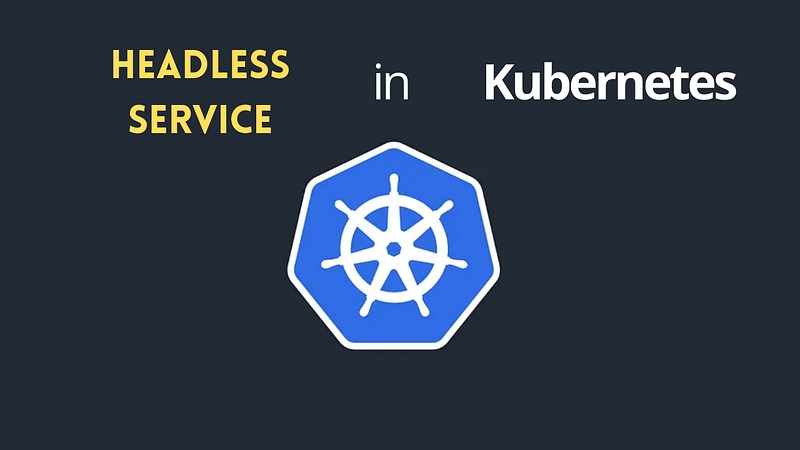Understanding Kubernetes: Part 19 -Headless Service

If you’ve been following our Kubernetes series 2025, welcome back! For new readers, check out Part 18: Understanding Kubernetes: Ingress Controller
Headless Service in Kubernetes
A Headless Service in Kubernetes is used to expose applications without providing a stable ClusterIP. Instead of routing traffic through a service proxy, it directly returns the IP addresses of the backend Pods, allowing clients to communicate with individual Pods directly. This is particularly useful for applications that require direct pod-to-pod communication, such as databases or stateful workloads.
Example Use Case:
Suppose you are running a distributed database (e.g., Cassandra, Elasticsearch, or PostgreSQL), and your application needs to interact with specific database nodes directly. A Headless Service enables clients to discover and connect to Pods individually, making it ideal for stateful applications that require persistent connections to specific Pods.
Capabilities:
Direct Pod Access:
Resolves service name to individual Pod IPs instead of a single virtual IP.
Useful for stateful applications needing direct communication with specific instances.
2. DNS-Based Pod Discovery:
Provides a list of healthy Pod IPs via DNS queries, enabling client-side load balancing.
3. Stateful Workloads Support:
Commonly used with StatefulSets to maintain persistent pod identities.
YAML Example:
apiVersion: v1
kind: Service
metadata:
name: db-service
spec:
clusterIP: None # Headless service (no ClusterIP assigned)
selector:
app: database
ports:
- protocol: TCP
port: 5432 # Service port
targetPort: 5432 # Pod portIn this example, the service will not be assigned a ClusterIP. Instead, DNS queries for db-service will return the individual Pod IPs, allowing applications to directly connect to database instances at:
db-service.default.svc.cluster.localA DNS lookup command inside the cluster:
nslookup db-service.default.svc.cluster.localThis will return a list of Pod IPs instead of a single service IP.
In My Previous Role:
As a Senior DevOps Engineer, I extensively used Headless Services to optimize internal service-to-service communication, particularly for stateful applications. For instance, when deploying a multi-node PostgreSQL cluster, we used a headless service to allow application pods to directly connect to specific database instances without relying on a centralized service proxy. This setup improved connection efficiency, enabled load distribution at the application level, and allowed precise scaling of individual database nodes.
Another example was with Elasticsearch clusters, where headless services helped to manage node discovery dynamically, ensuring smooth scaling and failover handling without impacting the application layer.
🚀 Ready to Master Kubernetes?
Take your Kubernetes journey to the next level with the Master Kubernetes: Zero to Hero course! 🌟 Whether you’re a beginner or aiming to sharpen your skills, this hands-on course covers:
✅ Kubernetes Basics — Grasp essential concepts like nodes, pods, and services. ✅ Advanced Scaling — Learn HPA, VPA, and resource optimization. ✅ Monitoring Tools — Master Prometheus, Grafana, and AlertManager. ✅ Real-World Scenarios — Build production-ready Kubernetes setups.
🎓 What You’ll Achieve
💡 Confidently deploy and manage Kubernetes clusters. 🛡️ Secure applications with ConfigMaps and Secrets. 📈 Optimize and monitor resources for peak performance.
🔥 Start Learning Now: [Join the Master Kubernetes Course](https://cloudops0.gumroad.com/l/k8s)
Don’t miss your chance to become a Kubernetes expert! 💻✨
🚀 Stay ahead in DevOps and SRE! 🔔 Subscribe now and never miss a beat on Kubernetes and more. 🌟
Last updated